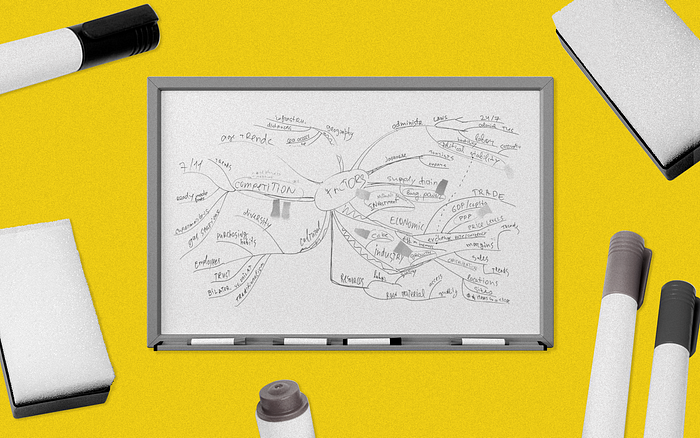Member-only story
Everyday Design Icons
An Ode to the Whiteboard, Corporate America’s Least Appreciated Office Tool
Why the symbol of corporate creativity will survive the remote-work era

Chances are if you’ve spent time in offices, you’ve spent time around whiteboards — and, perhaps, you’ve spent time dreading them. But where did these things come from, and how did they become a physical symbol of the mandatory brainstorming session?
Fittingly, the precise history of the whiteboard is somewhat tentative and subject to revision and correction. Many accounts give inventor credit to a Korean War veteran named Martin Heit, who discovered he could write on film negatives with a Sharpie, then wipe the markings away; in the mid-1950s, he designed the first whiteboard, essentially coated with a similar laminate. Others say it was really Albert Stallion, an American in the steel business, who devised the original whiteboard in the ’50s or possibly the early ’60s.
Let’s just leave both names on the board and link them with a question mark. Whoever dreamed up the original whiteboard, its use was fairly limited until a second invention came along: the dry-erase marker. “Early whiteboards were not significantly easier to clean than blackboards, requiring a wet cloth to remove the ink,”…

